Dutch Villages - Day 6
|
|
I had signed up for a guided day-trip tour of the Dutch countryside including a visit to the famous windmills at Zaanse Schans. We caught the tour bus at the Amsterdam Central Station. We had a guide who was very friendly and knowledgeable and most importantly, spoke English!
Our first stop was Zaanse Schans which has not one, but four, of the giant windmills, in working order. Zaanse Schans is only 13 miles north of Amsterdam.
The working mills in Zaanse Schans include De Poelenburg, a sawmill built in 1869; De Kat (the cat), built in 1696 to grind paint pigment; and oil mills De Zoeker (the seeker) and De Bonte Hen (the speckled hen).
|
| |
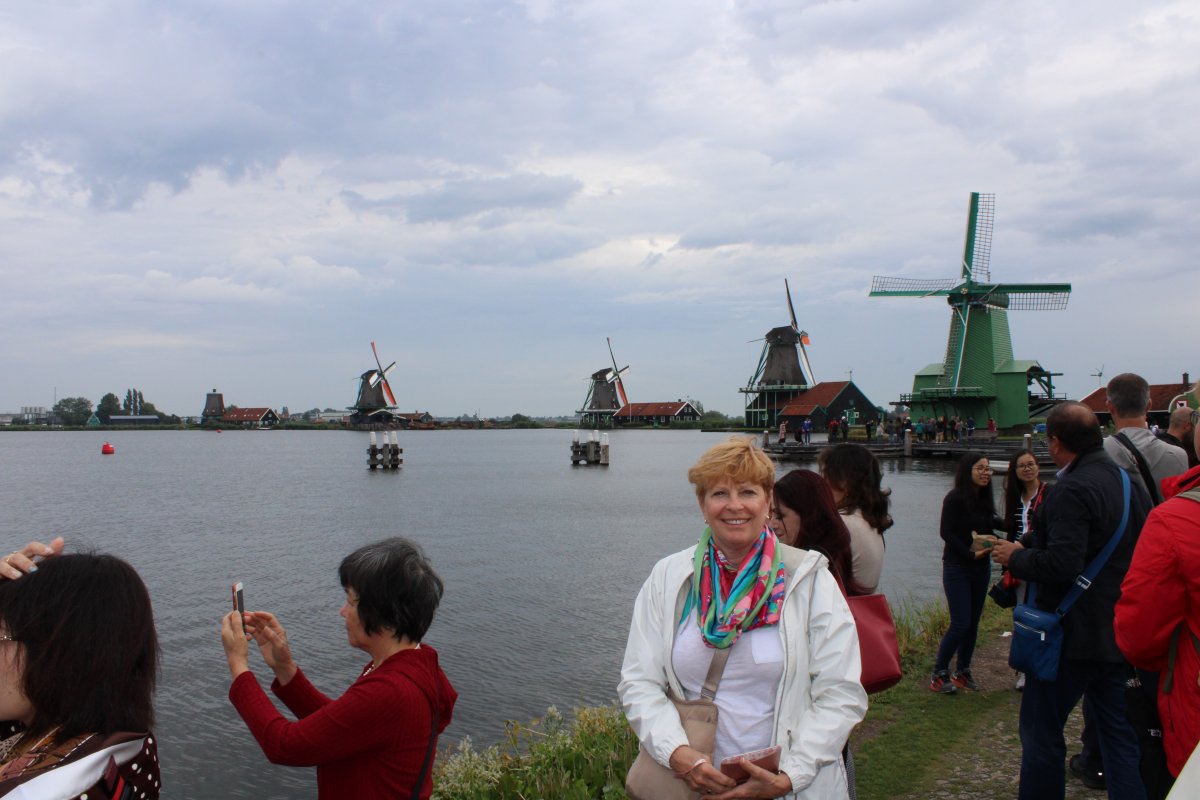 |
|
|
This was clearly a major tourist attraction. The large parking lot was filled with tour buses. But our guide got us inside one of the windmills without waiting.
|
| |
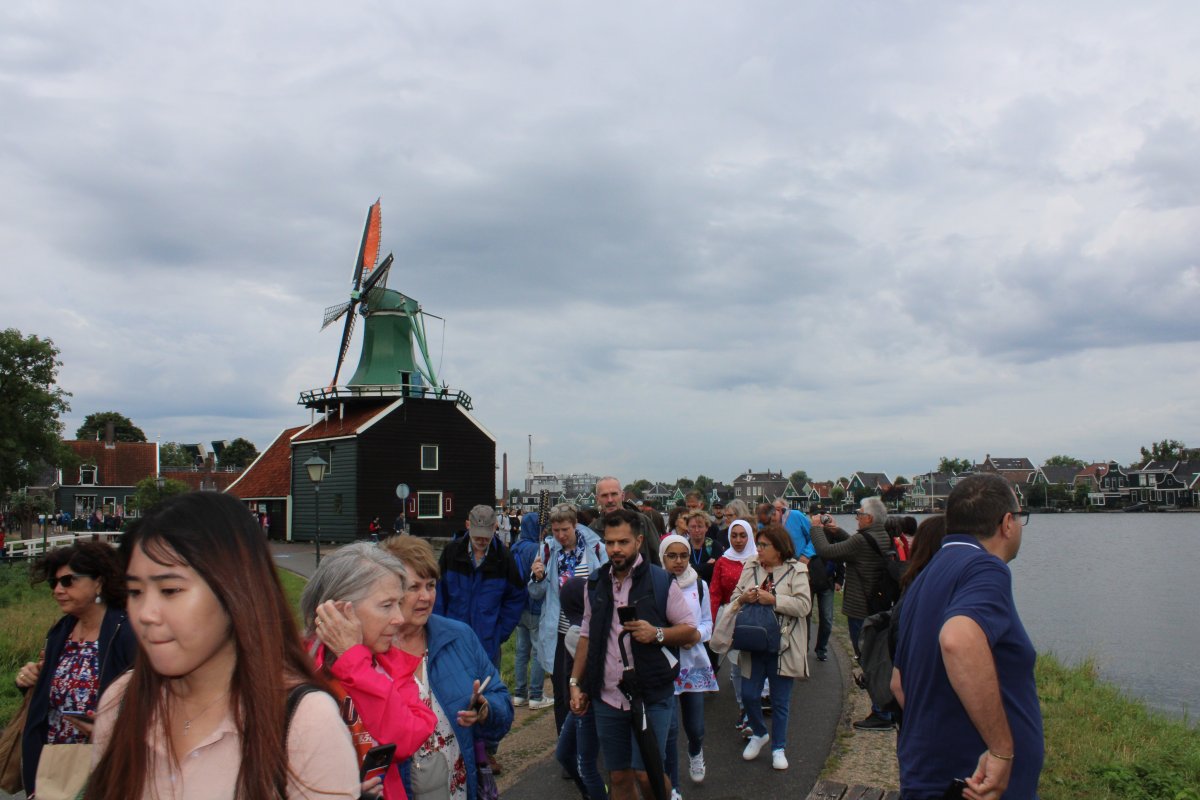 |
|
|
I never realized it, but the windmills have detachable "sails". Makes sense. There may be times when you don't want the thing turning.
We went inside the De Zoeker windmill.
|
| |
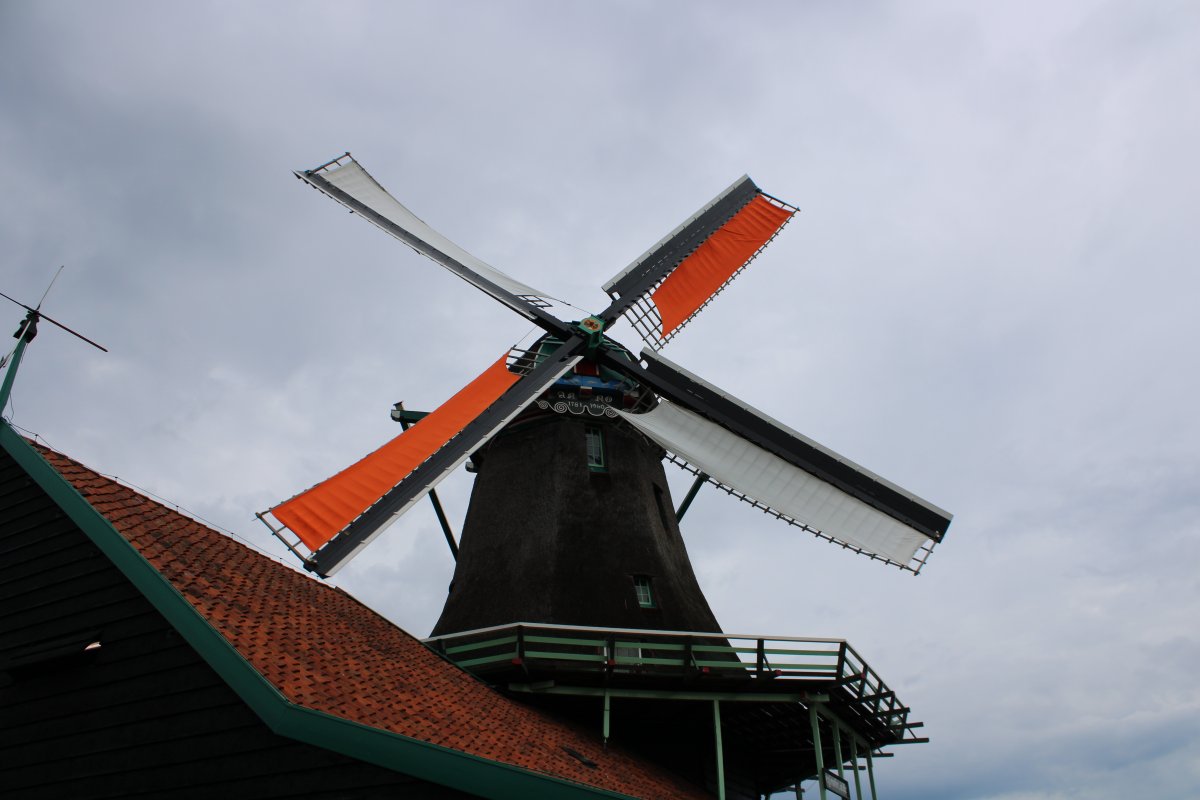 |
|
|
The inner workings of the windmill. This particular windmill -- the De Zoeker -- is used to make oil by grinding peanuts. The wind-powered blades (or sails) turn causing that big grindstone wheel to go round and round and crush the peanuts. You really got a sense for the power this thing puts out. Nothing was going to stop that grindstone from moving when those blades were turning.
|
| |
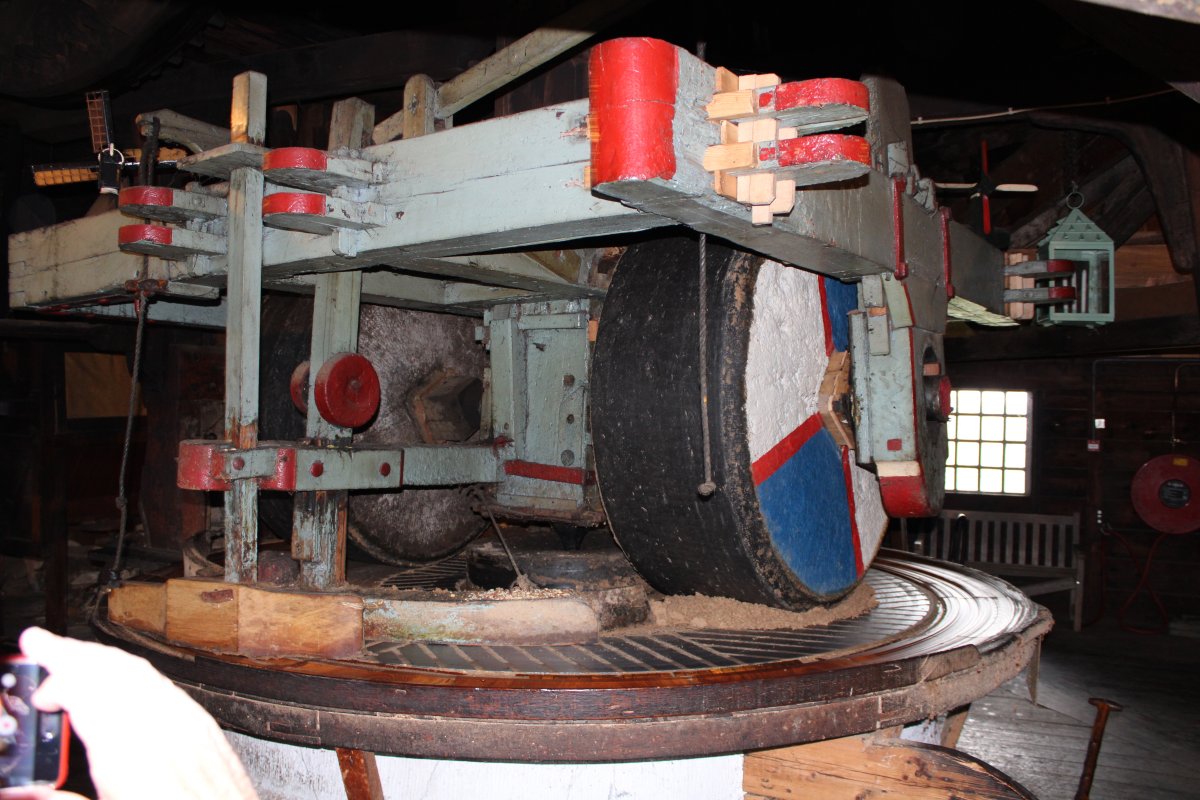 |
|
| Somewhere down there is where the finished product -- the oil -- emerges. A single man ran the operation. He told us how long it took to produce an amount of oil. Then he told us what a modern machine produced, and we all laughed. But back in the 17th century, this is all they had. |
| |
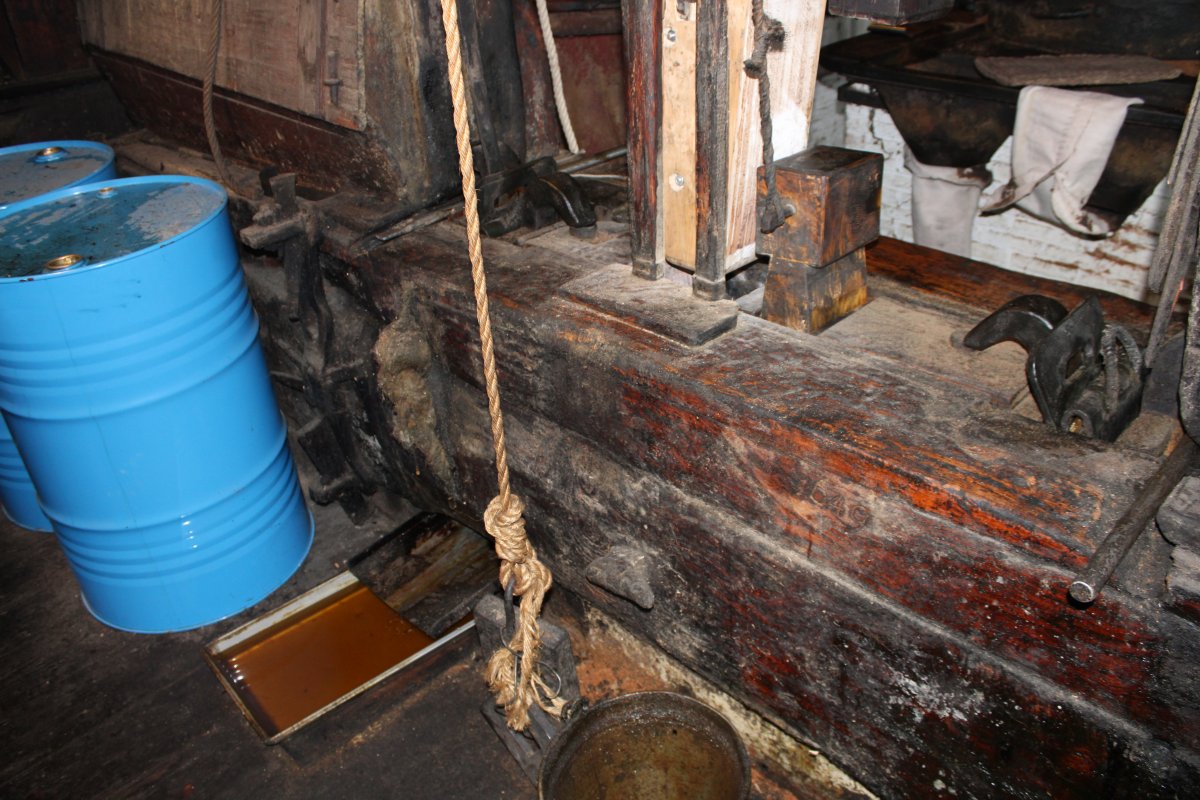 |
|
| A good look at the Het Jonge Schaap windmill which is a working wood mill. That's the Zaan River on the left. |
| |
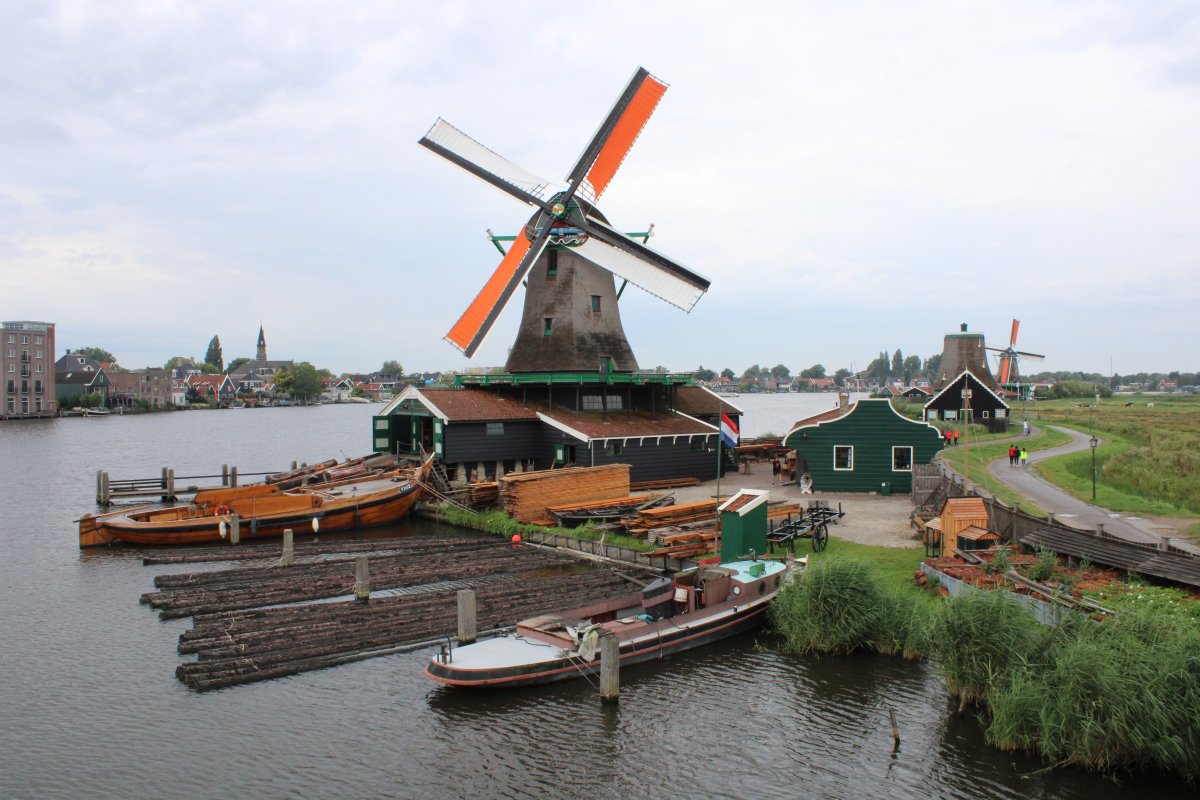 |
|
| Now we are on the platform that surrounds the base of the windmill structure, checking out the thatched roof. |
| |
 |
|
|
A blade passes by. Up close, they are pretty big. And move pretty fast.
|
| |
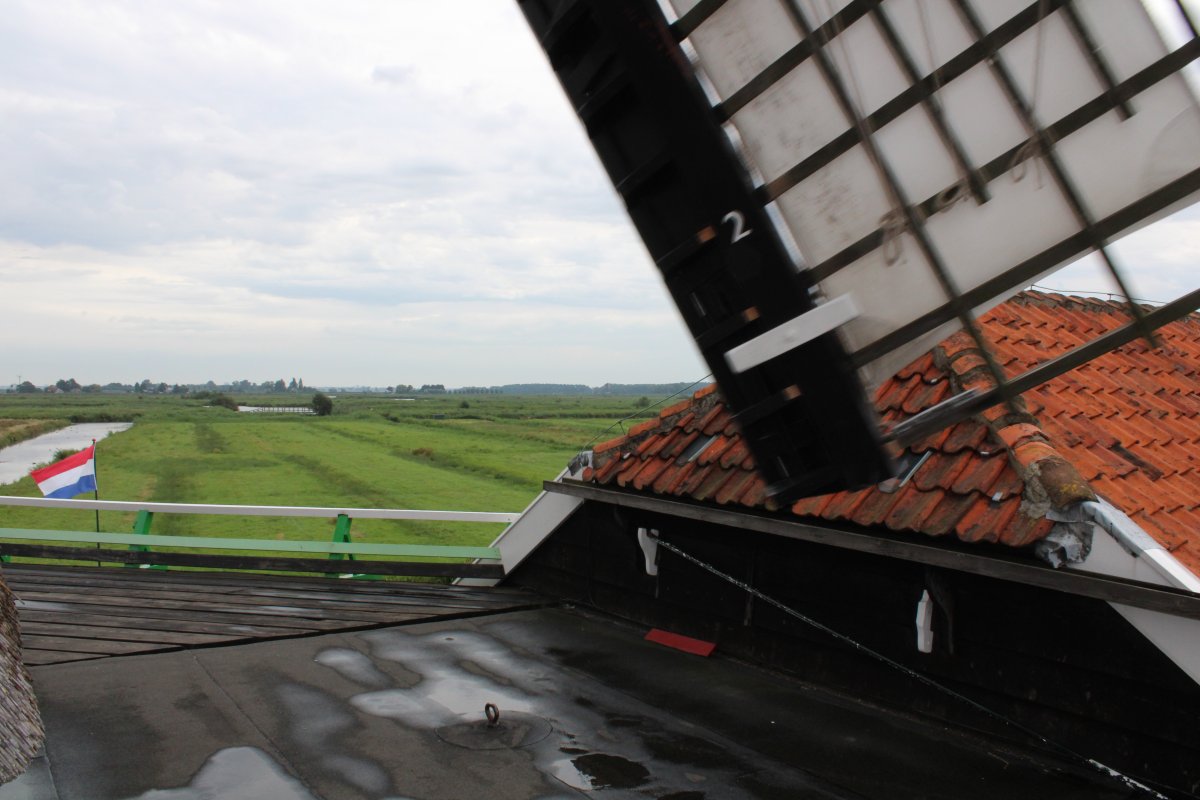 |
|
| This model gives an idea how complex the entire windmill system really is. |
| |
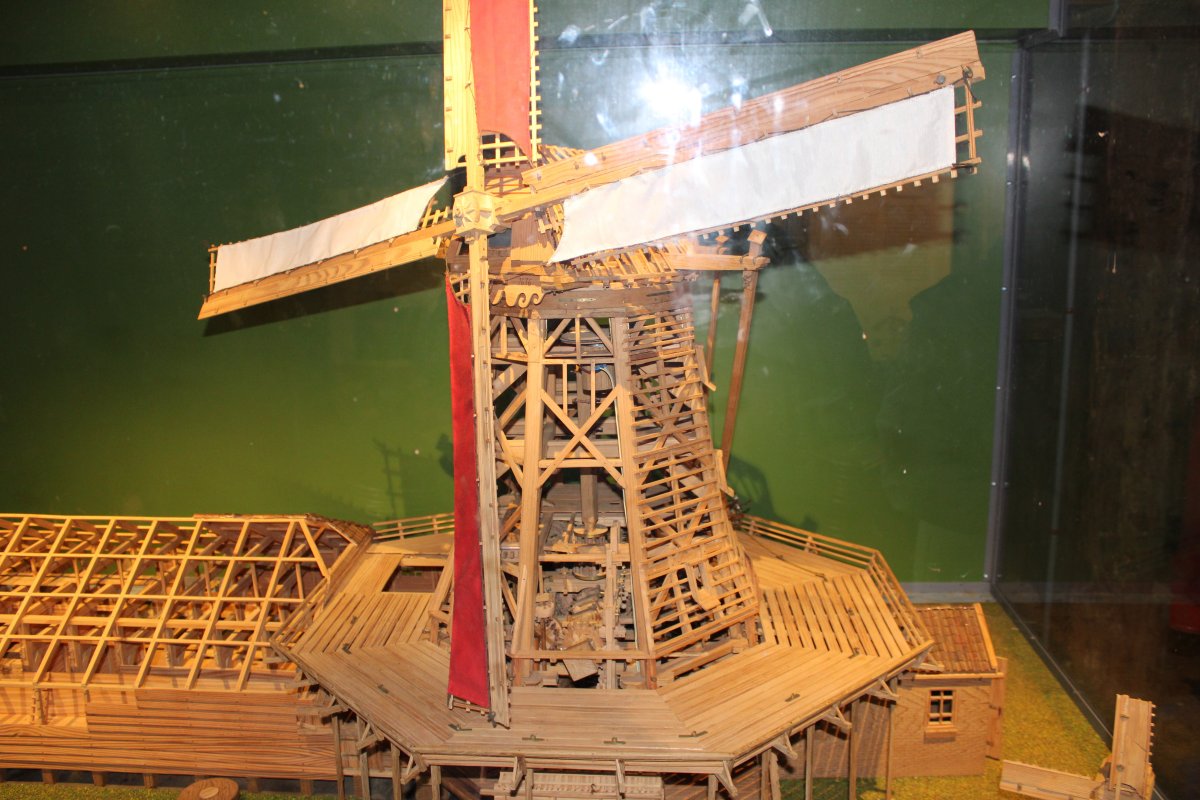 |
|
| Walking back to the village area. That's the De Kat windmill on the right. |
| |
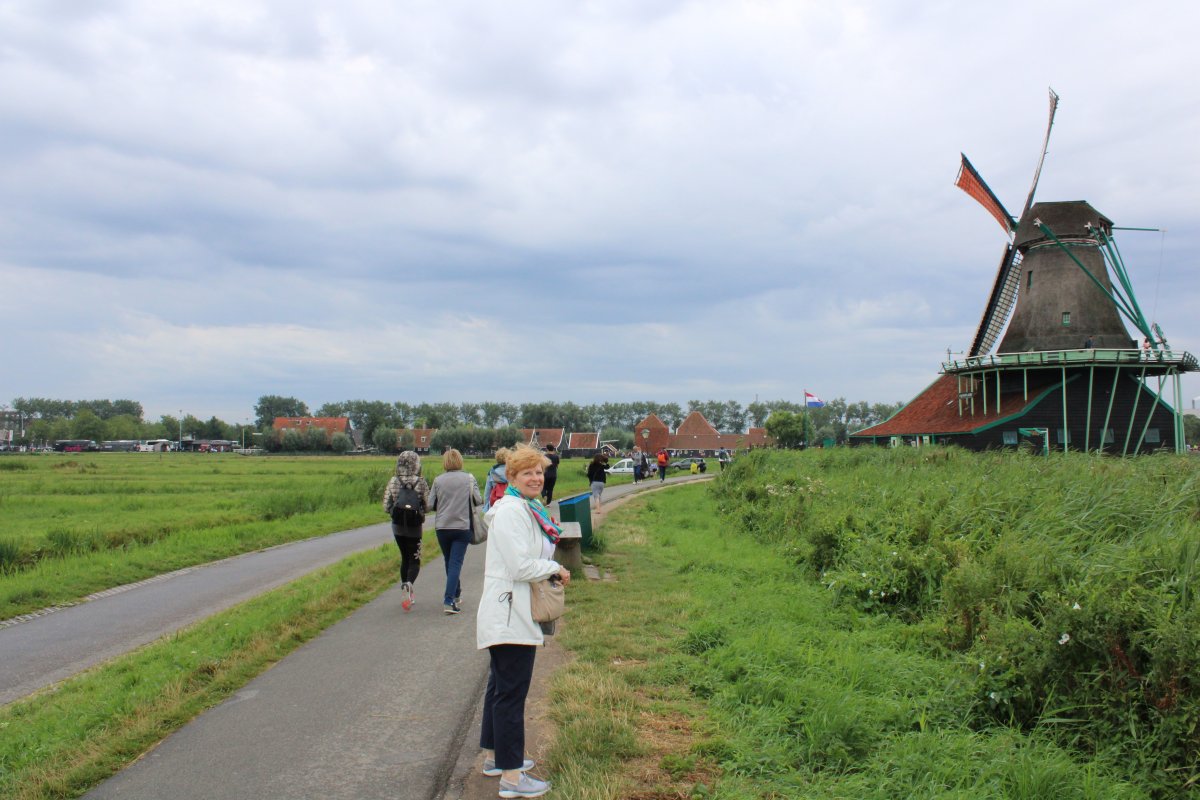 |
|
| And of course, a friendly Dutch Cat greeted us by the De Kat windmill. |
| |
 |
|
|
Dutch farm animals!
In addition to the four big windmills, the Zaanse Schans village has a cheese farm, clog-making shop, bakery museum, history museum, heritage museum, etc. We would see most of that stuff at other villages later in the day.
|
| |
 |
|
The bus took us a few miles east to the pretty little Dutch town of Edam. On the way we passed through farmland that had been reclaimed from the sea through use of polders (dikes) and drainage. It is pretty amazing what they did and how they did it. |
| |
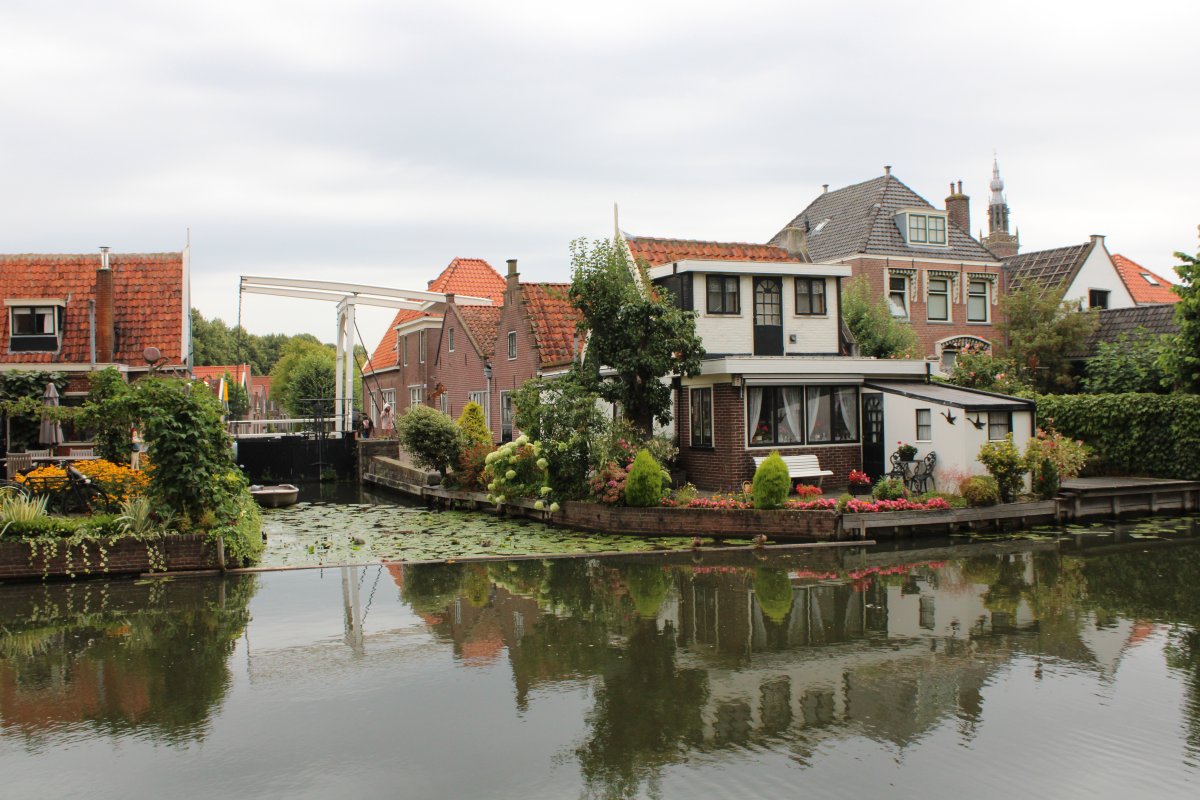 |
|
| |
| |
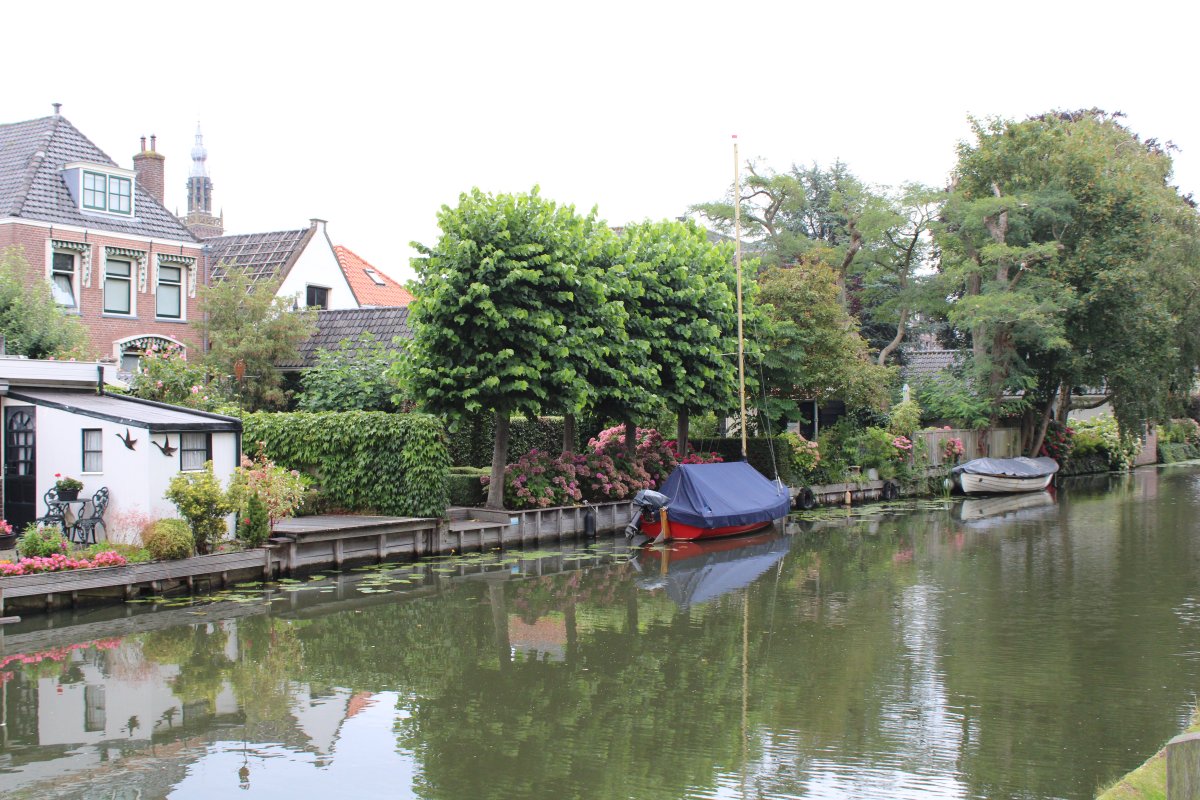 |
|
|
|
| |
 |
|
| The village square. |
| |
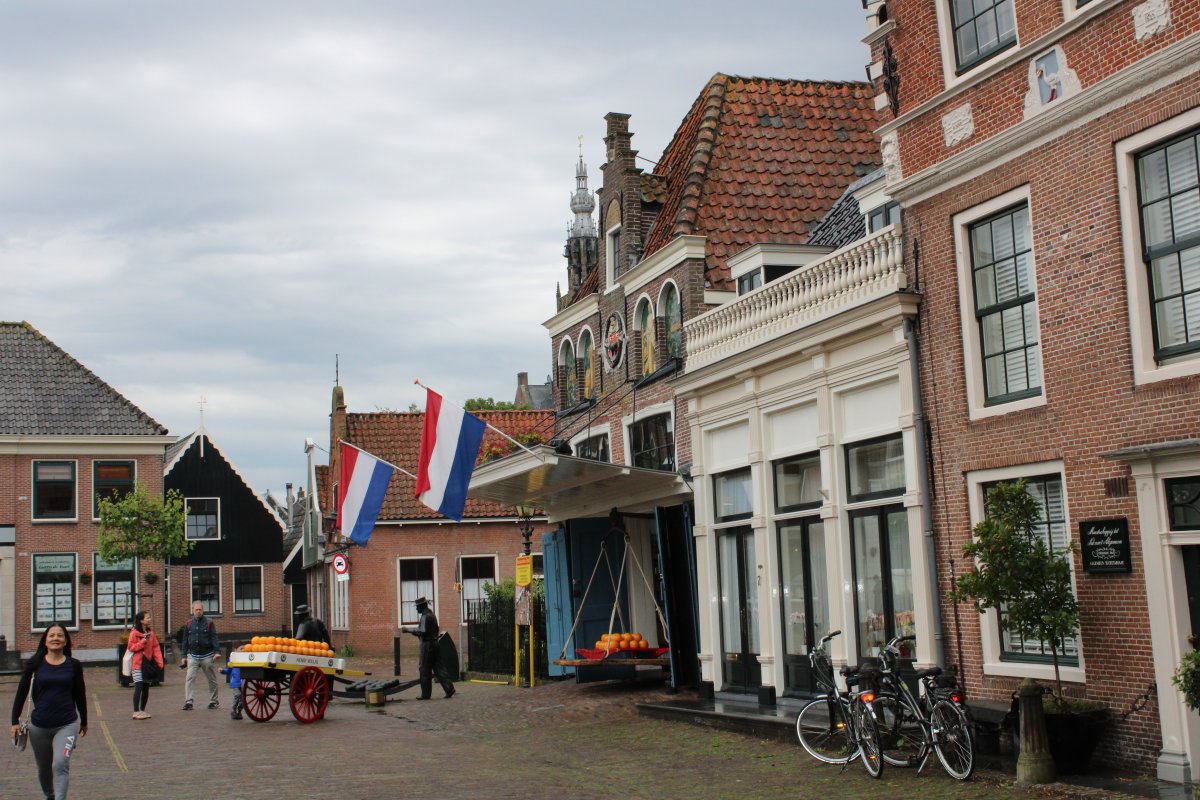 |
|
| |
| |
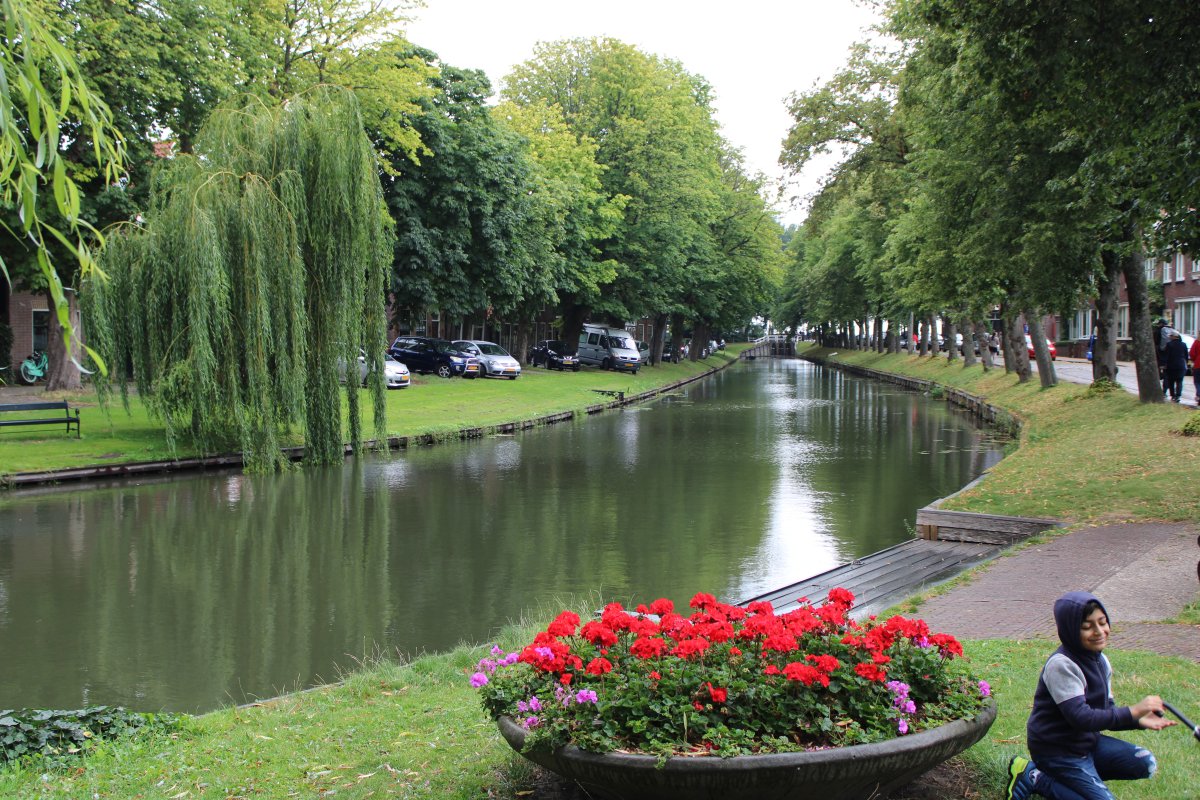 |
|
|
St. Nicholas (Sint Nicolaaskerk) in Edam.
The "Grote Kerk" is of cathedral dimensions and was probably built at the beginning of the 15th Century. St Nicholas church is one of the largest 3-ridged churches in Europe. Built on piles, the weight of the church was an important consideration and the vaulted ceiling is a wooden copy of a stone ceiling. The church also contains many stained glass windows donated as gifts from neighbouring towns or by the flourishing Edam guilds (such as the guild of ships' carpenters) after the fire in 1602. We did not have time to go inside though.
That's our guide at lower left facing the camera.
|
| |
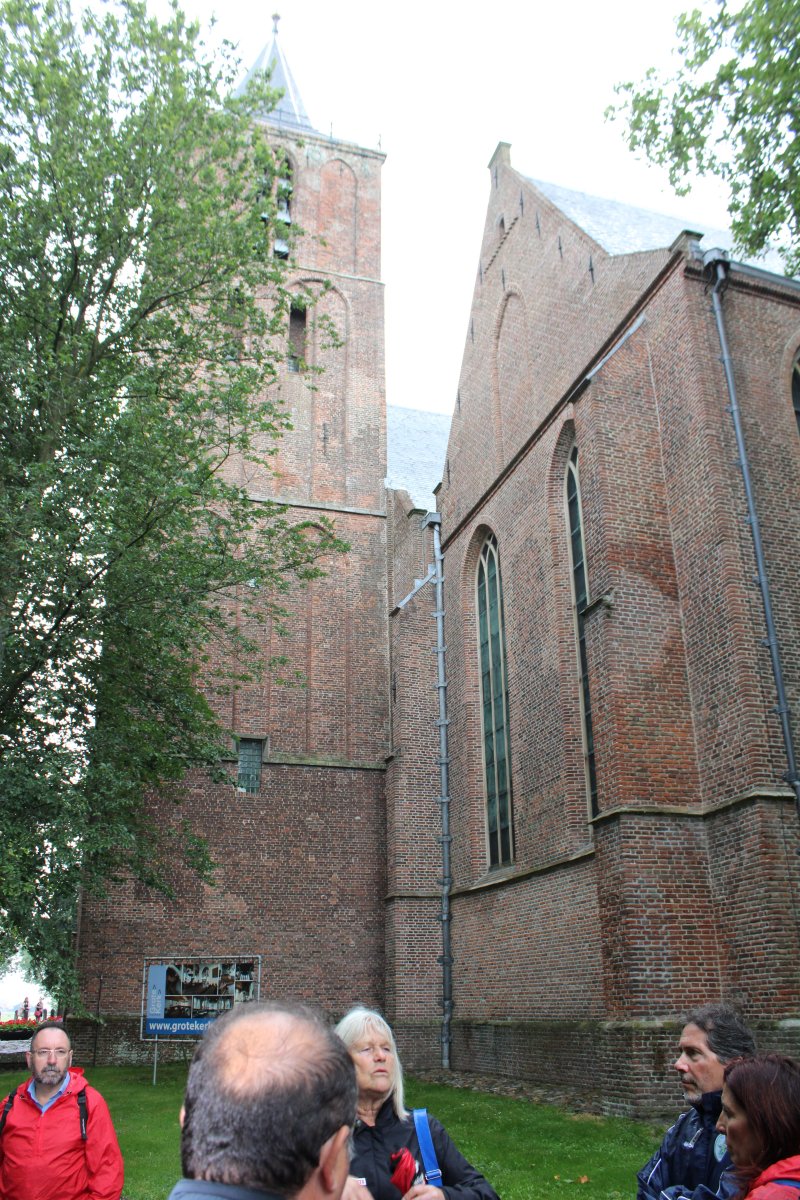 |
|
| The next stop was a shop see the art of wooden shoe-making! We watched a guy use this machine to make a wooden shoe. It basically uses an existing wood shoe as a guide to carve a new wood show out of a block of wood. Faster than carving one by hand, but slower than a modern factory. Of course, not too many people wear wooden shoes anymore anyways! |
| |
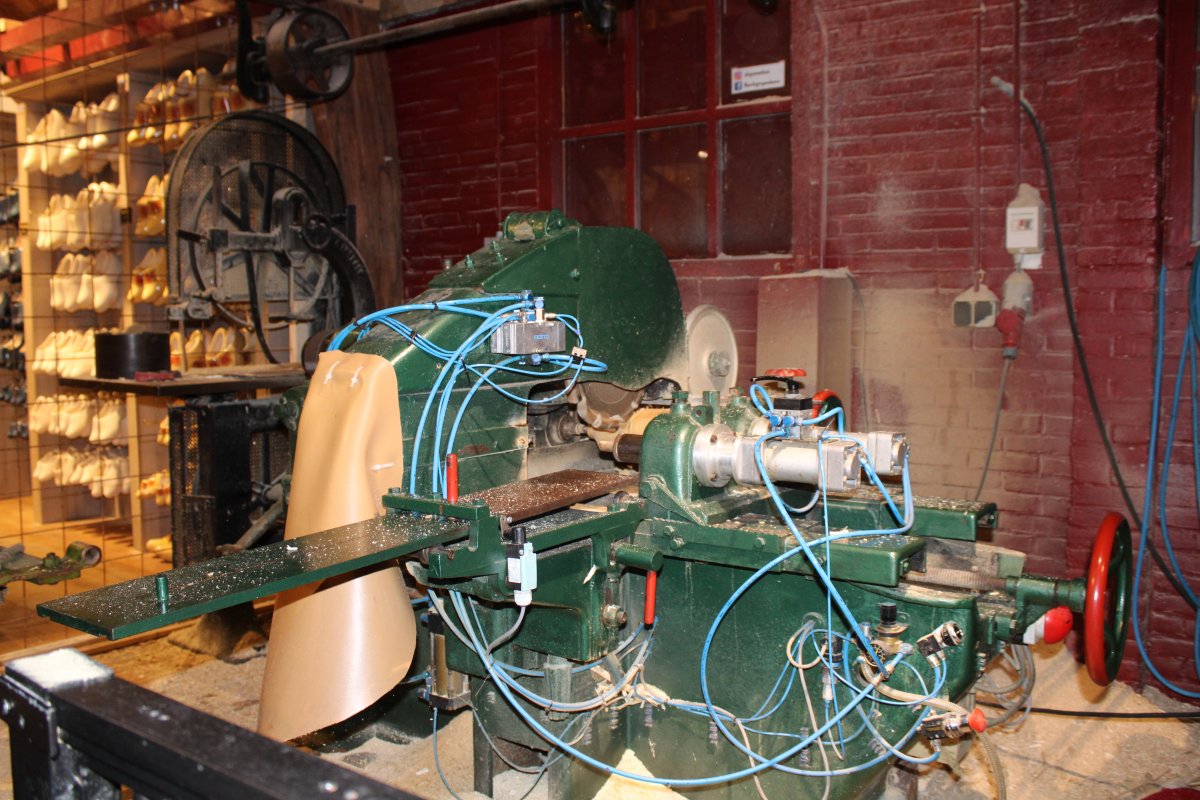 |
|
|
Cow outside the shop proudly wearing his wooden clogs. Lynnette bought a pair in the gift store as a souvenir.
|
| |
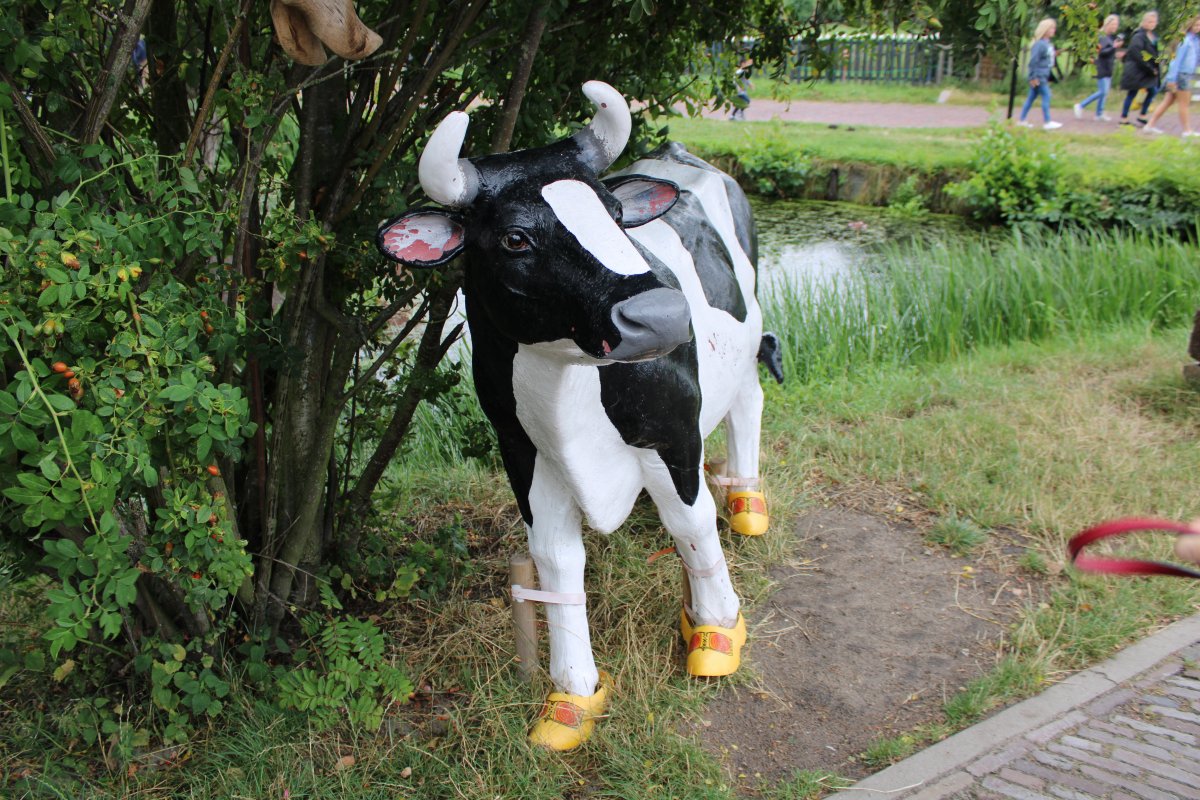 |
|
|
On the south side of Edam is Volemdam, where we took a ferry east across the Gouwzee lake, which itself is part of the larger Markemeer lake. Both lakes were created from what used to be called the Zuilderzee -- essentially the North Sea. This water is all fresh. Again, amazing engineering.
The Zuiderzee was a shallow bay of the North Sea in the northwest of the Netherlands, extending about 60 miles inland and at most 30 miles wide, with an overall depth of about 13–16 feet. Its name is Dutch for "southern sea". In the 20th century the majority of the Zuiderzee was closed off from the North Sea by the construction of the Afsluitdijk, leaving the mouth of the inlet to become part of the Wadden Sea. The salt water inlet changed into a fresh water lake now called the IJsselmeer (IJssel Lake) after the river that drains into it, and by means of drainage and polders, an area of some 580 square miles was reclaimed as land.
|
| |
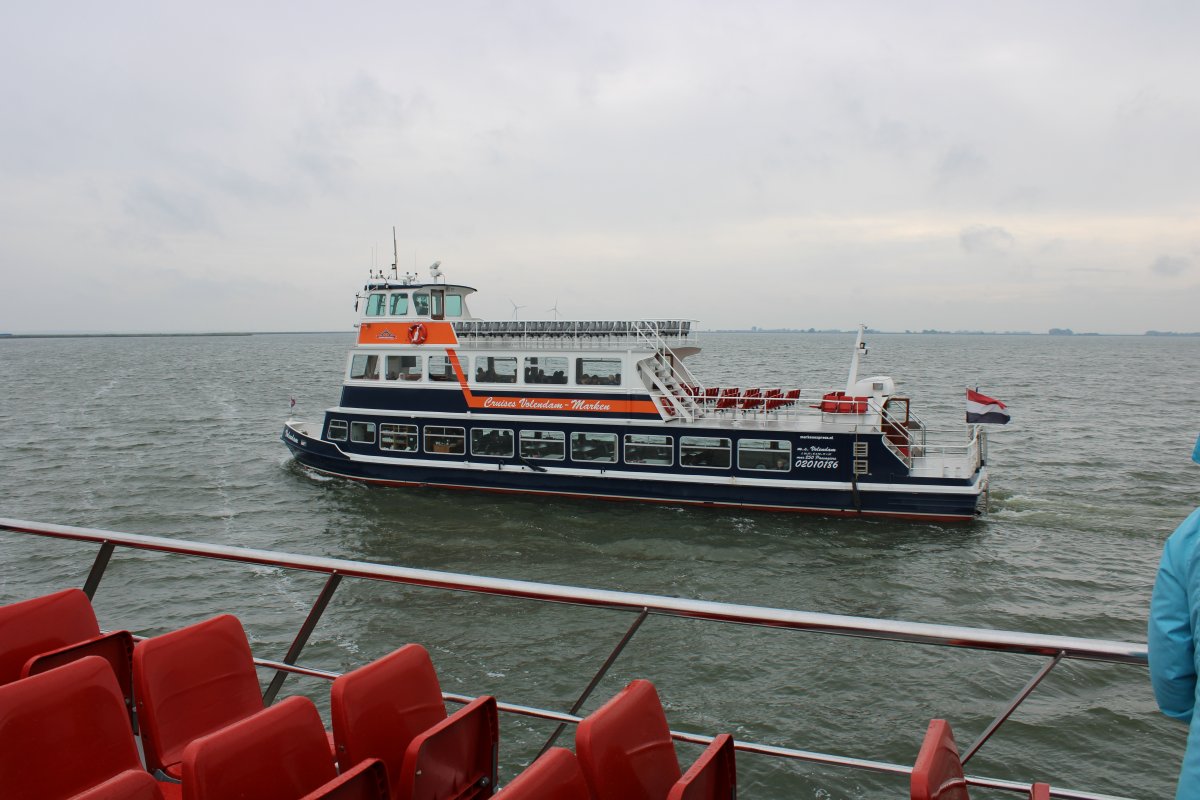 |
|
|
Looking back at Volemdam.
|
| |
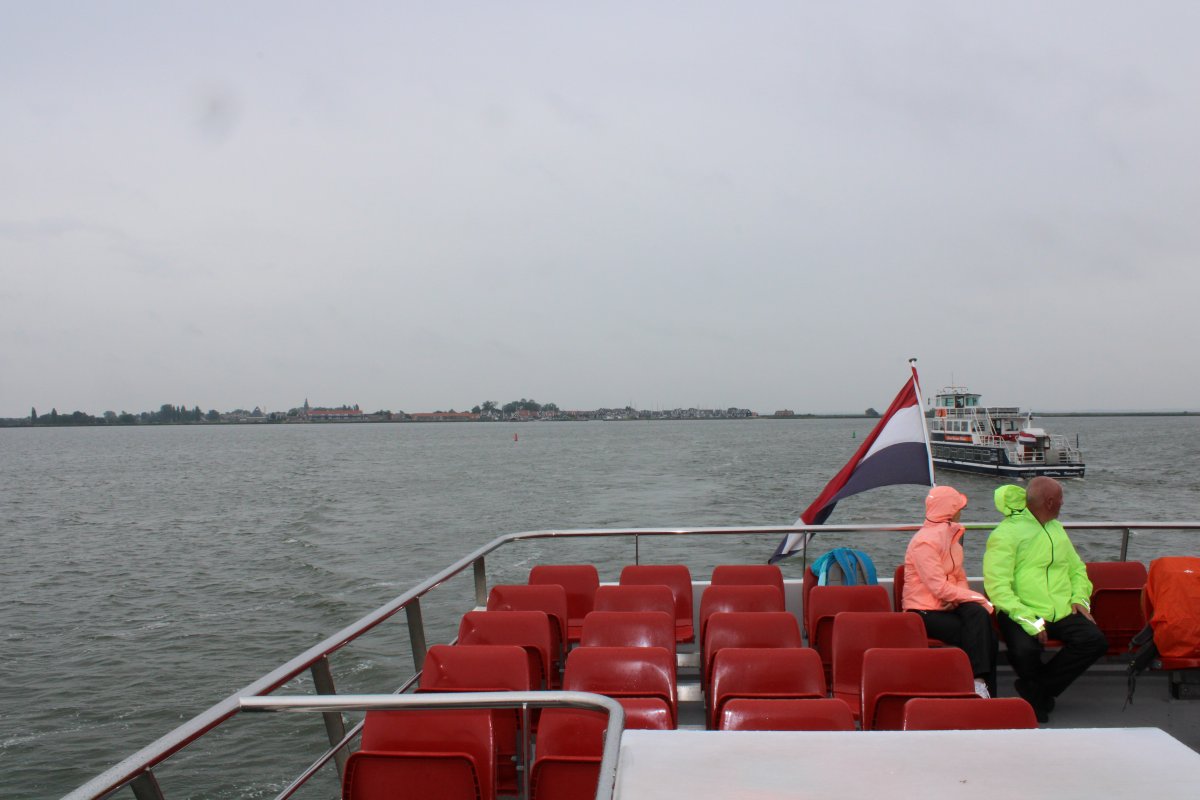 |
|
| Maybe we are back in the 18th century? |
| |
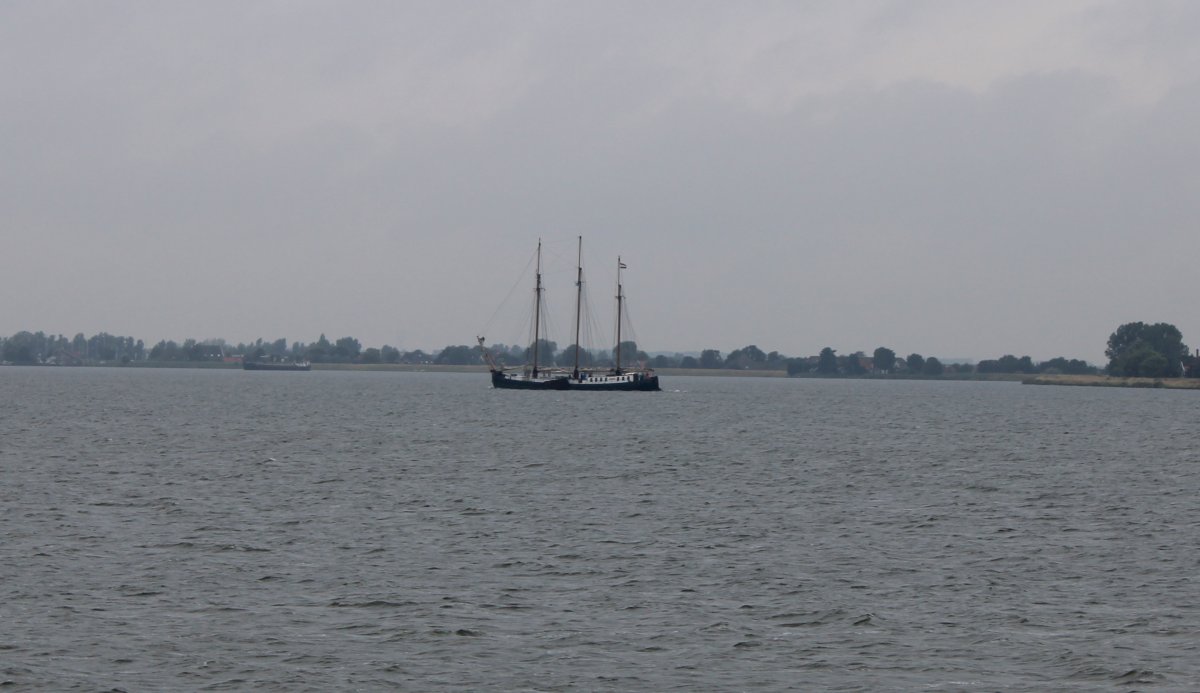 |
|
|
Now in the little port of Marken. Marken has a population of 1,770 and is located on a peninsula -- looks more like an island to me -- in the Markermeer Lake and was formerly an island in the Zuiderzee. It is connected to the mainland of North Holland by a causeway.
|
| |
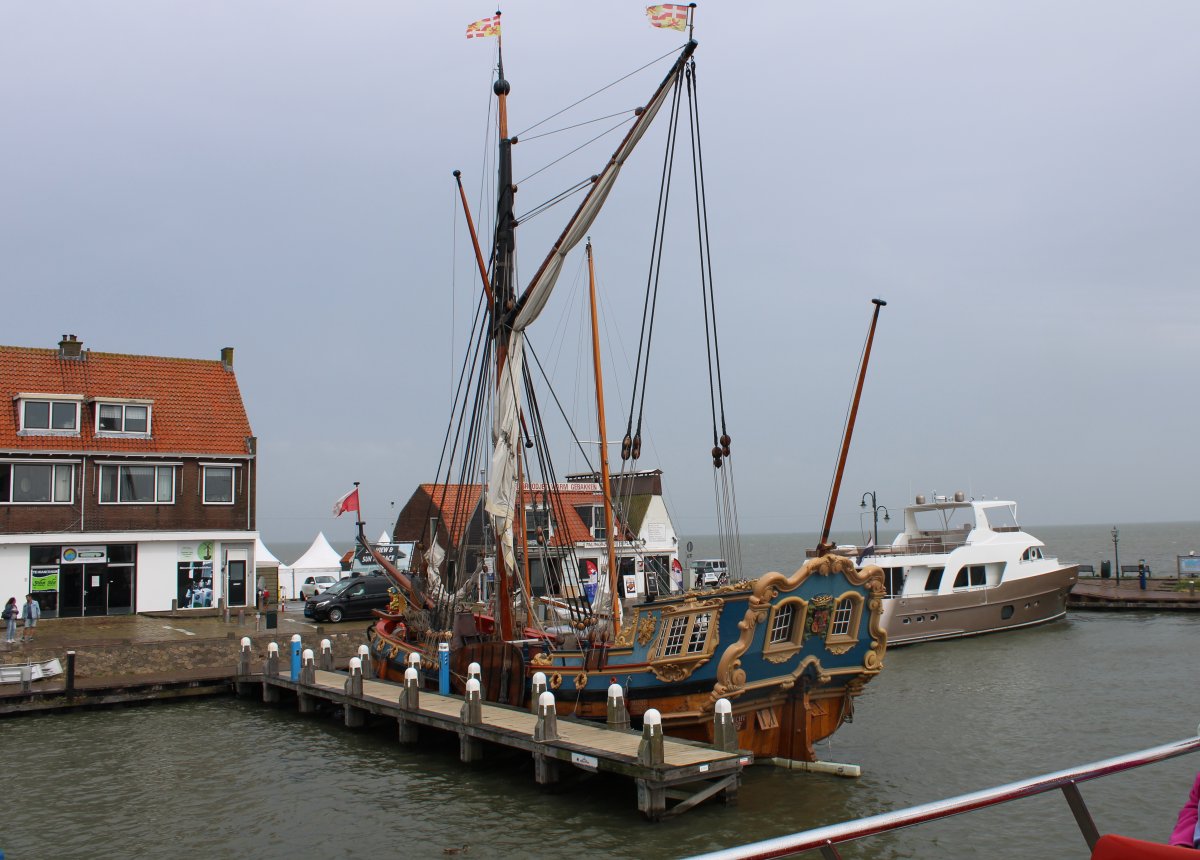 |
|
| The characteristic wooden houses of Marken are a tourist attraction. |
| |
 |
|
|
Back to the port area.
|
| |
 |
|
|
Sailing is big around here.
|
| |
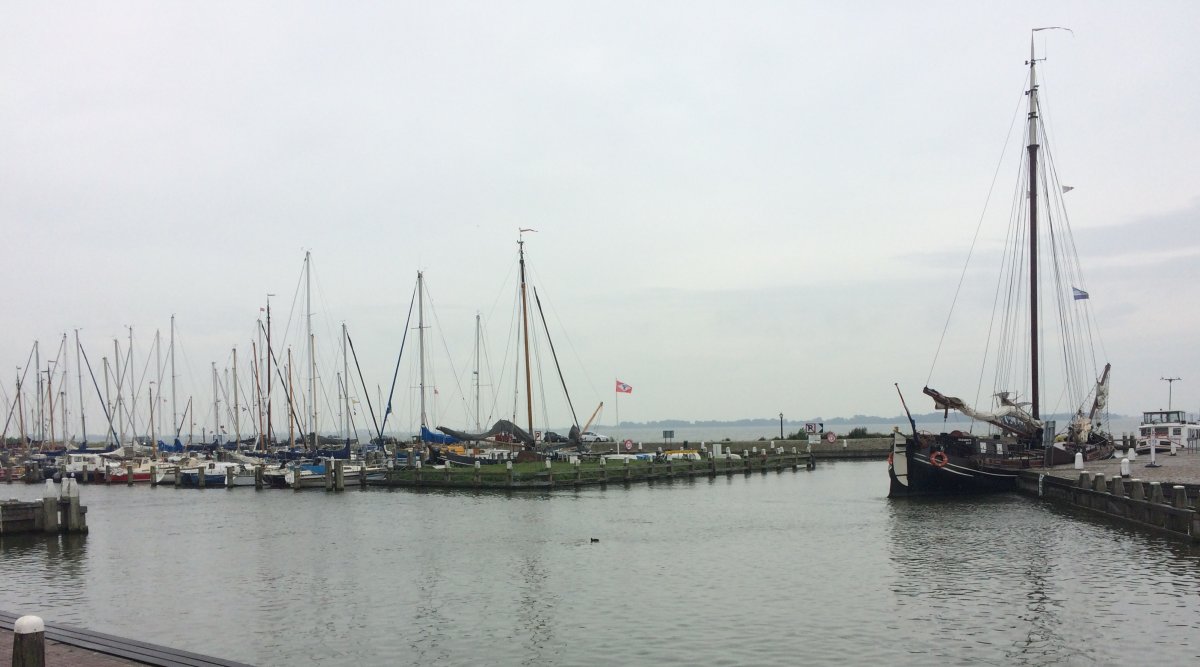 |
|
| Part of the package was lunch in this Tavern. As you can see, the weather was a little cool and damp. We were all glad to sit down in the nice, warm restaurant and enjoy a hot lunch. |
| |
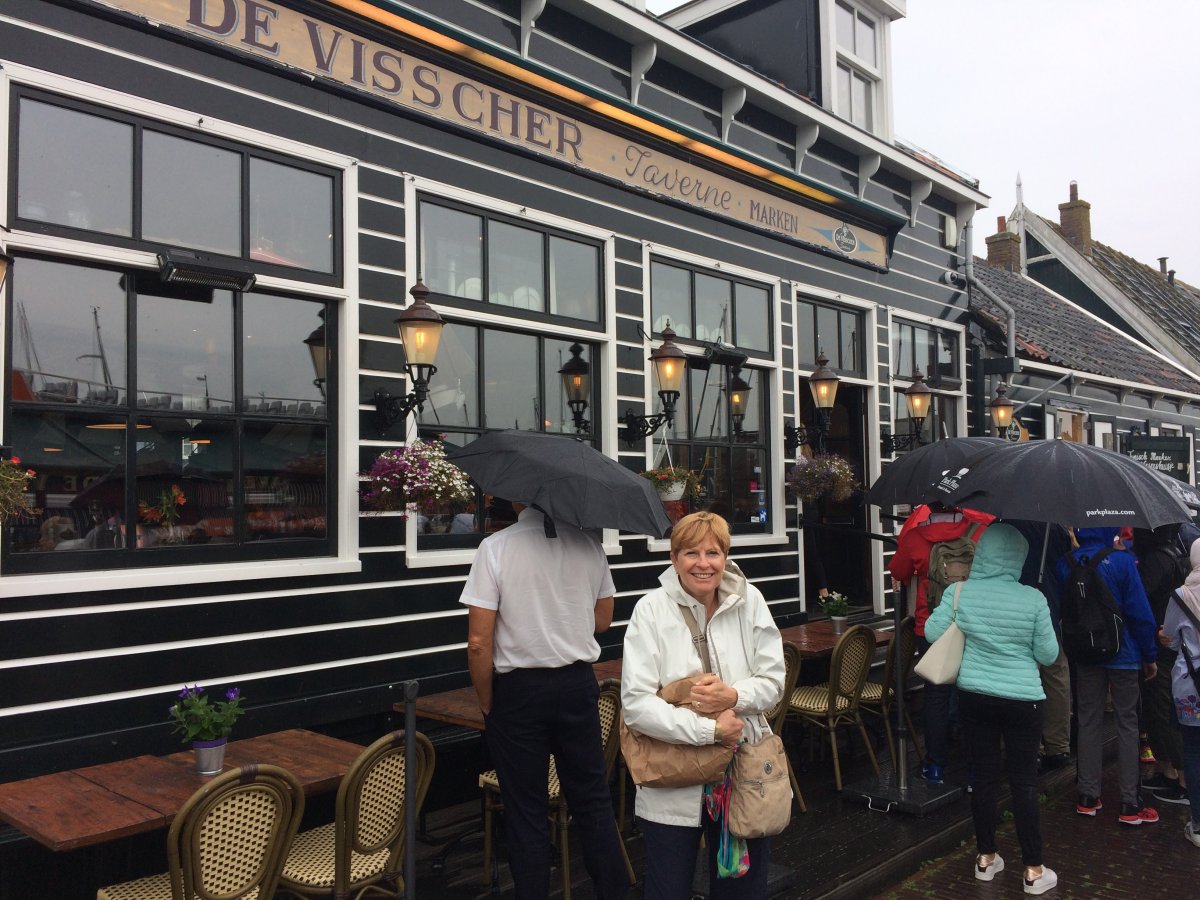 |
|
|
We saw a demonstration in this little cheese factory. Here, Lynnette is trying to decide whether she should buy this large chunk of Dutch cheese.
|
| |
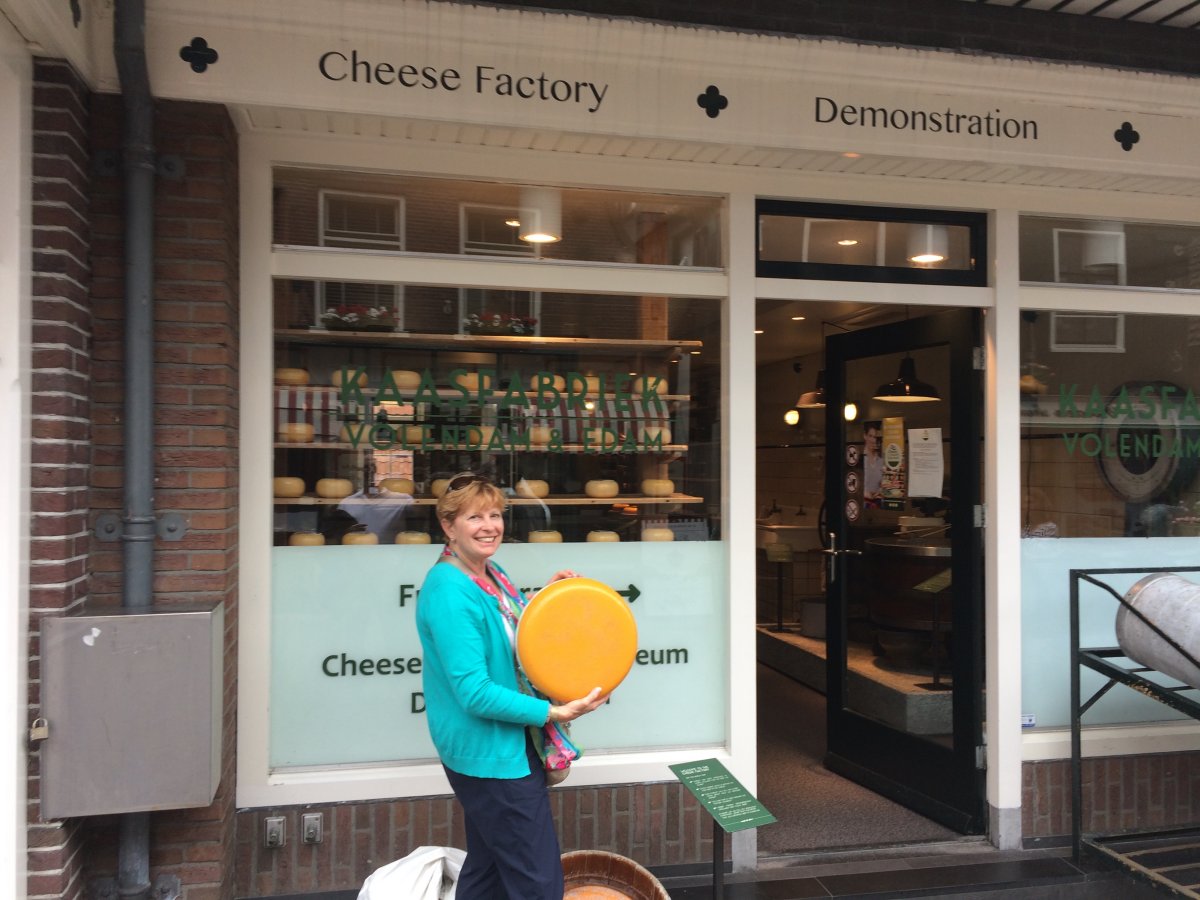 |
|
|
Yes, Marken was a little touristy. But where else can you get an original Volendam waffle?
We took the bus south across the causeway and back to Amsterdam. Fun day. I'm glad we took this trip for a look at the Dutch countryside.
|
| |
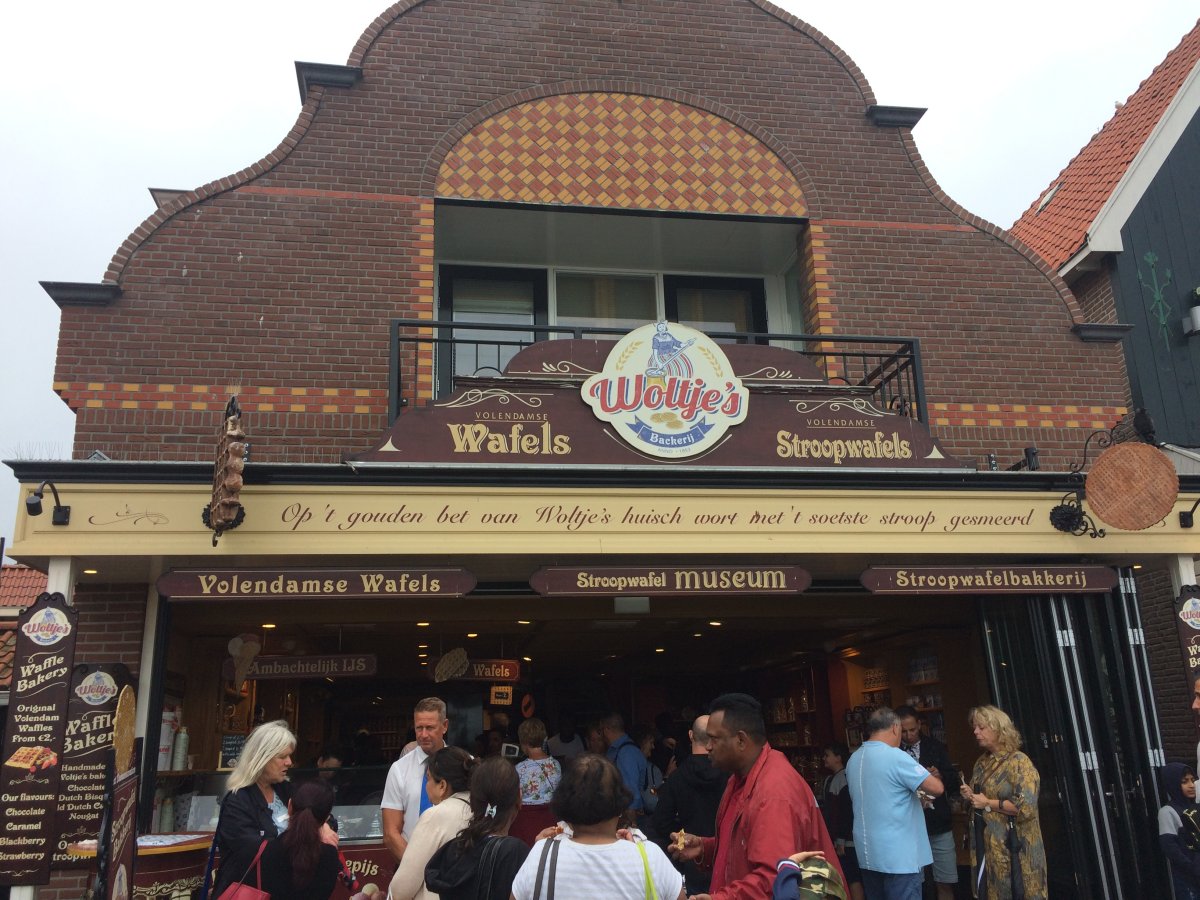 |
|
| |
| |
|
|
|
|
|
|





























